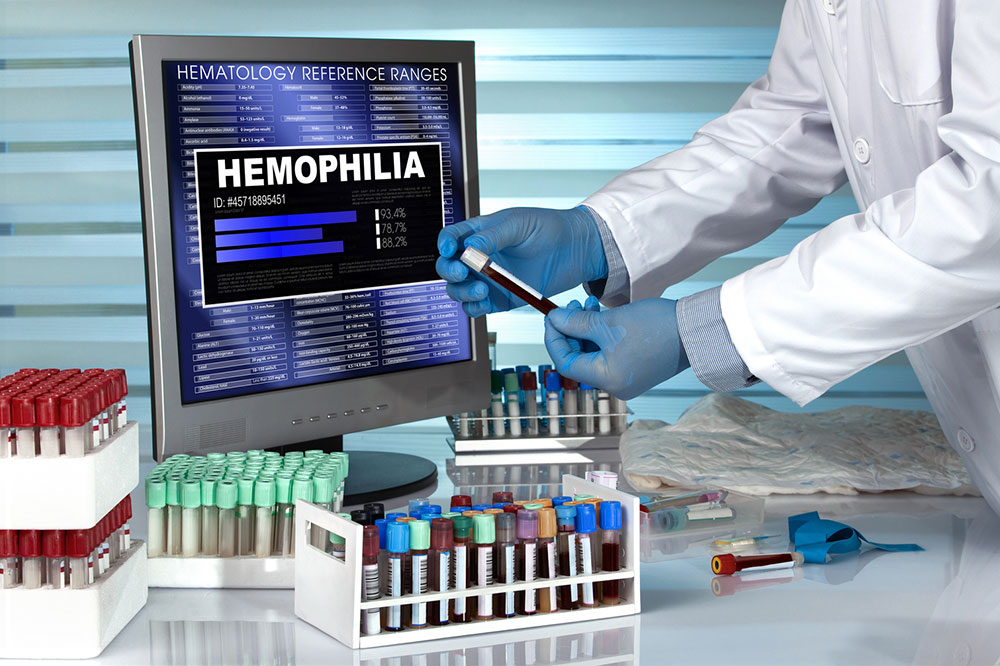
Hemophilia – Its symptoms, causes, and management
Hemophilia is an uncommon hematological disorder characterized by impaired clotting ability in the blood. This condition arises from a deficiency or absence of specific clotting factors within the bloodstream. Consequently, individuals affected by hemophilia may experience prolonged bleeding episodes, which, if left unaddressed, can pose life-threatening risks. This comprehensive guide aims to delve into the symptoms, causes, indicators, and available treatment alternatives for hemophilia, equipping you with a profound comprehension of this condition.
Hemophilia – A closer look
Hemophilia is a hereditary condition characterized by its predominant occurrence in males, although there are exceptional instances where females can inherit the disorder. The disorder manifests in two main types: hemophilia A and hemophilia B. Hemophilia A is caused by a deficiency in clotting factor VIII, while Hemophilia B arises from a deficiency in clotting factor IX. Despite their differences in clotting factors, both types share comparable symptoms and treatment strategies.
Signs and symptoms of hemophilia
The signs and symptoms of hemophilia can vary depending on the severity of the condition. Here are some common signs to look out for:
- Frequent and prolonged nosebleeds
People with hemophilia often encounter spontaneous nosebleeds that prove challenging to control or stop. - Easy bruising
Individuals affected by hemophilia may easily develop excessive bruising, even from minor injuries or without any apparent cause. - Joint pain and swelling
Hemophilia often manifests in joint pain and swelling due to internal bleeding. This symptom can significantly impact their daily lives by causing discomfort, inflammation, and limited range of motion in the affected joints. - Excessive bleeding
One of the hallmark characteristics of hemophilia is the tendency to experience excessive and prolonged bleeding, even from minor cuts, dental procedures, or surgical interventions. - Blood in urine or stool
In severe cases of hemophilia, bleeding can occur in the urinary or gastrointestinal tract, resulting in blood in the urine or stool.
Causes of hemophilia
Hemophilia is a genetic disorder that arises from mutations in the genes responsible for producing clotting factors. These genes are specifically located on the X chromosome, leading to the condition predominantly affecting males. However, it is important to note that females can also carry the gene and pass it on to their children, even if they do not exhibit any symptoms.
Treatment options for hemophilia
Hemophilia, an inherited genetic disorder that impairs the blood’s ability to clot, currently lacks a definitive cure. Nonetheless, numerous effective treatment strategies exist to address the condition and reduce the incidence of bleeding episodes. Below, we outline several widely employed treatment options for hemophilia:
- Replacement therapy
Clotting factors are infused into the bloodstream to replace the deficient or missing clotting factors. - Gene therapy
This innovative treatment approach introduces healthy genes into the body to produce the missing clotting factors.
To conclude, developing a comprehensive comprehension of the symptoms, causes, indicators, and available treatment alternatives for hemophilia empowers individuals and their families to actively pursue a life of well-being and satisfaction. Should there be any suspicion of hemophilia in oneself or a loved one, seeking guidance from a healthcare specialist becomes imperative to obtain an accurate diagnosis and personalized treatment strategy.




